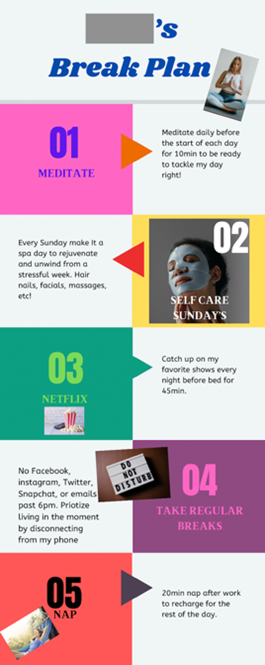How are you, as professors, addressing the ongoing mental health crisis that’s been driven in part by the pandemic?
First off, the crisis in college campuses is real, as documented by the likes of the New York Times, Washington Post, and Brookings. Many students simply aren’t motivated or focused. Those who seek help often report feeling lonely and isolated, according to national data collected by the Center for Collegiate Mental Health at Penn State.
As such, our role in this matter isn’t to dig into and attempt to solve—or even necessarily understand—students’ complex situations; rather, it is simply to be there as a trusted option for students to reach out to. This entails: 1) showing empathy; 2) helping students find ways to fulfill their academic requirements in your course; and 3) directing them to the appropriate professionals (such as an advisor or the campus counseling center) where necessary.
Discussions with professors, as well as my own experiences, tell me that more often than not, students either don’t think professors care or that we aren’t top-of-mind options to reach out to. Collectively speaking, we simply don’t have a history of being accessible.
If we want students to reach out to us, we need to make mental health and wellbeing more visible in our class. Visible, in this case, means that mental health is recognized as a priority. It’s something students will “feel”—similar to the way they sense classroom community. It needs to be cultivated.
In this same way, an environment that prioritizes mental health and wellbeing needs to be developed. The key is to address it multiple times and in multiple ways throughout the semester. Here are five specific ideas you can implement this term:
1. Create a mental health & wellbeing activity/assignment
This could be as simple as opening with an ice-breaker activity, where students share their common struggles. You can do this in-person, synchronously online, asynchronously online (e.g., via a discussion forum), or even in a hybrid classroom.
For a virtual class I taught last fall, I spoke candidly about the challenges I faced as a father of newborn twins, including the time I had to end class early because both infants were hysterical—screaming within earshot of students. This made me anxious every time I started a Zoom session.
While most of my students weren’t parents yet, they can all identify with similar distractions while videoconferencing. Sharing these experiences can help students feel they aren’t alone.
Aside from ice-breaker activities, I also turned mental health into an actual topicof study in my syllabi. Here was my recent four-part module with pre-service teachers:
- Opening: Teacher Burnout – Is It an Epidemic?
- Group Discussion: How Do You Deal with Stress Every Day?
- Reading: The Importance of Cultivating a Daily/Weekly Self-Care Routine
- Assignment: Create a Personalized “Self-Care Routine” Infographic to Share with the Class
I was so impressed with my students’ self-care plans (see two examples below), which were created using a graphic design tool called Canva:
You can bring up this topic during the first week of school or near the finals period. Either way, these multiple touch points (i.e., the mini-lecture, the reflections, the readings, and the infographic) can serve to remind students to take care of themselves and to reach out if needed. Several students expressed at the end of the course how this assignment pushed them to think more intentionally about their health.
2. Check in with students periodically
Emailing students periodically is another way to keep the mental health issue top-of-mind. I would follow up with the bottom 20 percent of performers (e.g., around four students in a class of 20) after a few weeks into the semester and write:
Hey [Name], I noticed that you’ve missed a couple of assignments for this class. Just wanted to check in with you and make sure everything’s OK.
While learning the material is crucial, your wellbeing is even more important. If there’s any way I can help, I will make it a priority.
Just reply to this email.
Prof. Eng
This template is flexible enough to work for large classes too (just without the personalization). More importantly, you have documentation—especially if there are subsequent follow-up threads with the student—to show patterns of progress (or lack thereof), should you need it later on.
In the end, not every student emailed will respond, but initiating contact goes a long way. Most will likely point to the amount of work or responsibilities they are juggling. Sometimes it takes multiple back-and-forth emails to get students to open up. Remember, the goal isn’t to dig into their personal life and solve their problems; it’s to gather enough information to determine if you are qualified to help. Anything related to their mental health should be directed to the appropriate personnel on your campus.
Don’t forget that the stigma of getting professional help can also prevent students from taking action. Reframing can help, by saying something like:
“I know it’s not easy to seek outside help. One way you can think about it is this: most of us have no problems seeing a doctor when we feel physical pain. So why wouldn’t we do the same when we experience mental pain? Our mind is just as important as our body.”
3. Bring in external expertise
This suggestion is fairly straightforward but easy to overlook. Is there someone, such as a campus counselor, who can talk to your class about mental health?
One of my faculty colleagues leads a yoga/meditation class during her time off. She’s offered to demonstrate de-stressing (breathing) techniques with my students. They also get to create take-home lavender sachets, which was a fun and active break from class.
4. Conduct a survey
Surveys are useful at the beginning of the semester (to help you anticipate issues) or midway (to see how students are progressing). You could list questions such as:
- How do you feel you are you doing in this class on a scale from 1 to 5?
- Is something outside of school interfering with your best work in this class?
- How can I, as the instructor, best support you to do your best?

If you would like a Google Forms template to modify, go here. (You will be asked to make a copy, after which you can modify the questions. Once done, provide the link to your students.)
5. Lighten the workload
At the end of last term, I asked students to fill out a “How-can-I-improve-this-class?” survey. It’s different from the course evaluations they normally complete.
No surprise—lightening the workload was a top request. Rather than cutting out specific tasks (e.g., posting a reflection on the LMS or coming to class with a question or comment), I’ll likely remove a couple of topics from the syllabus and spread the rest out. This will deepen students’ learning.
Technically, lightening the workload isn’t a “visible” a method, unless you explicitly tell students you’re cutting out topics. Regardless, reducing the number of topics you cover is typically good practice, pedagogically speaking. It will allow you to incorporate more mental-health related content and deepen the learning for other topics.
While there are countless other ways to make mental health and wellbeing visible, these five ideas can help you get started. The point is to do more than one thing and, in some cases, do some of those things (like checking in with students) multiple times. For the preoccupied student, the question of “Who do I reach out to?” becomes one less thing to worry about when mental health and wellbeing is visible in your course.
Norman Eng, EdD, is an education lecturer at Brooklyn College, NY, and the founder of EDUCATIONxDESIGN, Inc., which provides professional development training for faculty through workshops, online courses, and books. Download your free quick-start guide, “7 Proven Steps to Planning, Teaching, and Engaging Your Students,” at NormanEng.org.
References
Anemona Hortocollis. 2021. “Another Surge in the Virus Has Colleges Fearing a Mental Health Crisis,” New York Times. https://www.nytimes.com/2021/12/22/us/covid-college-mental-health-suicide.html
Lumpkin, Lauren. 2021. “A Mental Health Crisis Was Spreading on College Campuses. The Pandemic Has Made It Worse,” Washington Post. https://www.washingtonpost.com/education/2021/03/30/college-students-mental-health-pandemic/
Becker, Marty. 2021. “Educators are Key in Protecting Student Mental Health During the COVID-19 Pandemic,” Brookings. https://www.brookings.edu/blog/brown-center-chalkboard/2021/02/24/educators-are-key-in-protecting-student-mental-health-during-the-covid-19-pandemic/
Center for Collegiate Mental Health. 2021. Part 1 of 5: COVID-19’s Impact on College Student Mental Health. University Park: Pennsylvania State University Student Affairs. https://ccmh.psu.edu/index.php?option=com_dailyplanetblog&view=entry&year=2021&month=02&day=01&id=9:part-1-of-5-covid-19-s-impact-on-college-student-mental-health
Link to Google Forms Survey Template: https://docs.google.com/forms/d/11d_cNy112VUIoWxPP5R1RPiRIB0K4qJ6B83IIPRSYO4/copy








